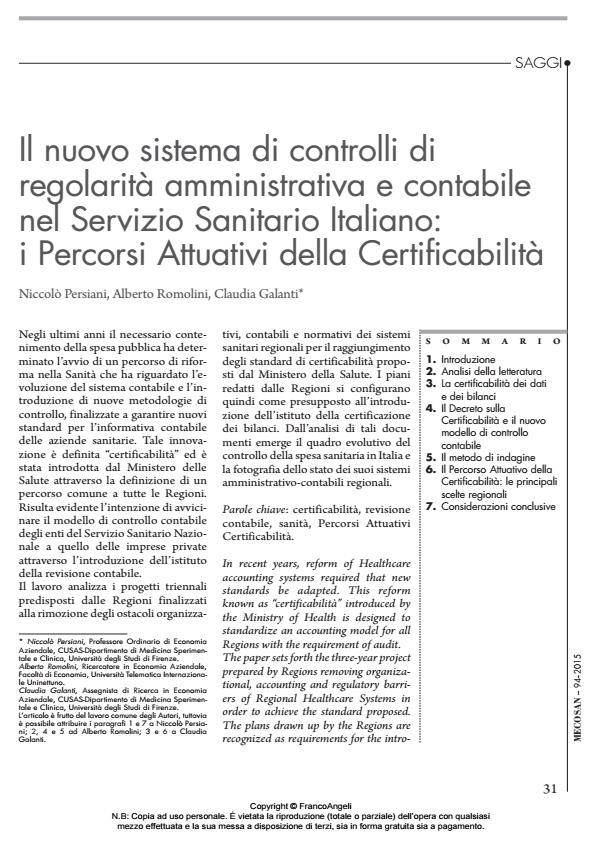Il nuovo sistema di controlli di regolarità amministrativa e contabile nel Servizio Sanitario Italiano: i Percorsi Attuativi della Certificabilità
Journal title MECOSAN
Author/s Niccolò Persiani, Alberto Romolini, Claudia Galanti
Publishing Year 2015 Issue 2015/94
Language Italian Pages 20 P. 31-50 File size 20267 KB
DOI 10.3280/MESA2015-094003
DOI is like a bar code for intellectual property: to have more infomation
click here
Below, you can see the article first page
If you want to buy this article in PDF format, you can do it, following the instructions to buy download credits

FrancoAngeli is member of Publishers International Linking Association, Inc (PILA), a not-for-profit association which run the CrossRef service enabling links to and from online scholarly content.
In recent years, reform of Healthcare accounting systems required that new standards be adapted. This reform known as "certificabilità" introduced by the Ministry of Health is designed to standardize an accounting model for all Regions with the requirement of audit. The paper sets forth the three-year project prepared by Regions removing organizational, accounting and regulatory barriers of Regional Healthcare Systems in order to achieve the standard proposed. The plans drawn up by the Regions are recognized as requirements for the introduction of audit over financial statements. The analysis of these documents shows the evolutionary framework of the governance over the Health Care expenditure in Italy and the picture of its accounting and administrative regional systems.
Keywords: Audit, accounting, healthcare
Niccolò Persiani, Alberto Romolini, Claudia Galanti, Il nuovo sistema di controlli di regolarità amministrativa e contabile nel Servizio Sanitario Italiano: i Percorsi Attuativi della Certificabilità in "MECOSAN" 94/2015, pp 31-50, DOI: 10.3280/MESA2015-094003